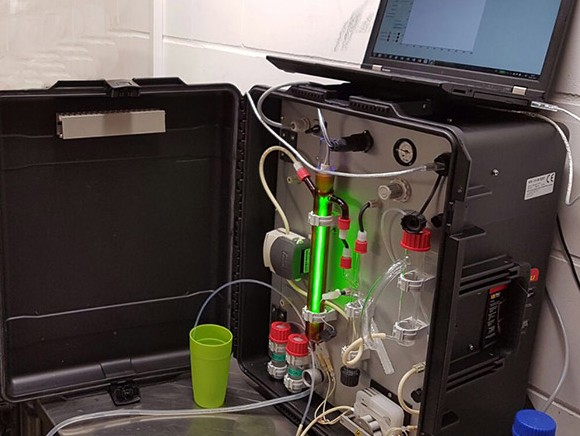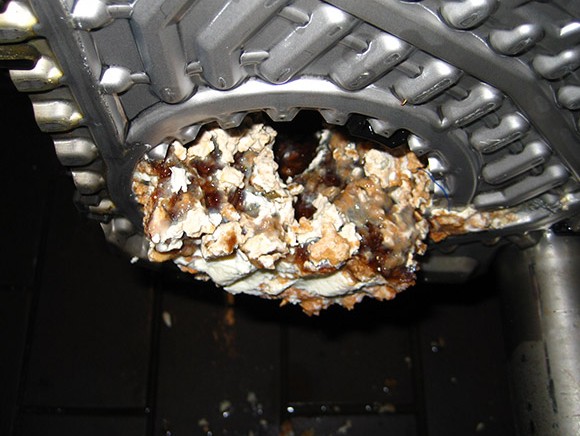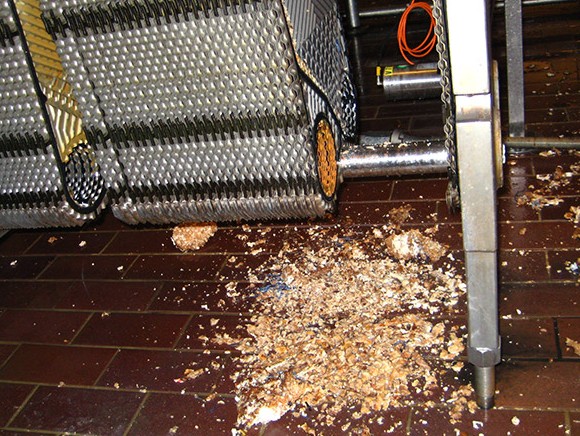
In the food industry, heat exchangers and pasteurisers play an important role in ensuring product safety and extending shelf life. At the same time, this equipment has a poor reputation; internal leaks, contamination and biofilm growth can pose a food safety risk.
These risks mean that plate heat exchangers and pasteurisers have to be checked regularly for leaks and contamination. “In the past they always had to be opened up, but the very act of opening them increases the risk of new leaks when the plates are replaced and tensioned,” says Marcel Wilmink, General Manager of the independent inspection firm Bactoforce. “Tubular heat exchangers were even more difficult to inspect.” Bactoforce has become specialised in locating microbiological risks in process equipment. The company has been working in the food sector and pharmaceutical industry for more than 25 years, inspecting systems such as pasteurisers, heat exchangers, tanks and spray dryers. “Twelve years ago we developed an extremely precise and reliable method for examining heat exchangers and pasteurisers for leaks without having to open them up. This method also makes it easy for us to inspect tubular heat exchangers. But it was still necessary to open up the equipment – with all the risks that entailed – for troubleshooting purposes as well as to validate the CIP cleaning. So we wanted to find a solution for that too.”
Therefore, to make an extra contribution to both product safety and cost savings, Bactoforce has spent the past four years working on a new inspection method – one which enables them to inspect heat exchangers and pasteurisers for both leaks and contamination without opening them up. Marcel: “First of all, it was important to decide the precise focus of the inspection. In the food industry, residues are often a combination of components of the raw materials and/or end product, comprising carbohydrates, proteins and fats. Besides that it’s interesting to be able to examine systems for the presence or absence of biofilm. One thing that proteins, fats and biofilm share is the presence of organic carbon. That’s why the new inspection method is based on the total organic carbon (TOC) content. We’ve used that approach to develop a quantitative method to determine the amount of contamination in a closed circuit, without opening it. The TOC measurement involves first oxidising a sample in a reactor to release carbon compounds. An acid reaction then separates the organic carbon from the inorganic. The organic carbon subsequently goes into a UV reactor where it’s converted into CO2, which can be quantitatively measured very precisely.”

What makes the Bactoforce inspection method so innovative is that it can measure residual build-up in the equipment. “The oxidation reaction occurs in the pasteuriser or heat exchanger. To achieve that we create a fluid circuit with the equipment, various pipes and our pump unit, and then we circulate the oxidator through the system. The oxidator comes into contact with the residue and/or the biofilm. We take one or more samples of the circulation water and analyse them in a mobile analysis unit. We also measure the acid reaction and the UV reaction, which expresses the carbon level in mg/l. This value is then compared against the carbon level in the circulation water, the so-called baseline.” Over the past two years this innovative inspection method has been validated using a wide range of different parameters and conditions by the University of Hanover, and it has been available in the Benelux region since earlier this year.
Bactoforce can now inspect closed flow systems such as pasteurisers, plate heat exchangers and tubular heat exchangers for organic residual build-up without having to open up the equipment. Things like pipes, manifolds, centrifuges, filling machines and suchlike can also be inspected using this method. The new inspection method can be applied for troubleshooting purposes, regular preventative inspections and to validate or optimise existing (and new) CIP settings. An optimum CIP system saves a lot of money throughout the entire equipment lifetime. “The measurement is so precise that an increase of just 1 mg/l in TOC compared with the baseline circulation water indicates contamination. We can’t distinguish between the presence of residue or biofilm, but they often both occur together. In the case of troubleshooting for a pasteuriser or heat exchanger, it’s now possible to determine whether it is a leak or contamination. These two problems often exhibit the same symptoms, but they each require a completely different approach. Now that it’s possible to identify these defects at an early stage, the manufacturer can take action promptly – and before any impact on the end product.”

“Last year some of our customers opened up the heat exchanger after our inspection, to check whether our findings were correct and in some cases also to manually remove severe contamination,” states Marcel. “Our findings were always proved to be right. We also validated a number of heat exchangers as being clean. Some people doubted us initially, so some systems were opened up after all – and they were always found to be spotlessly clean on the inside.”
Source: © Bactoforce